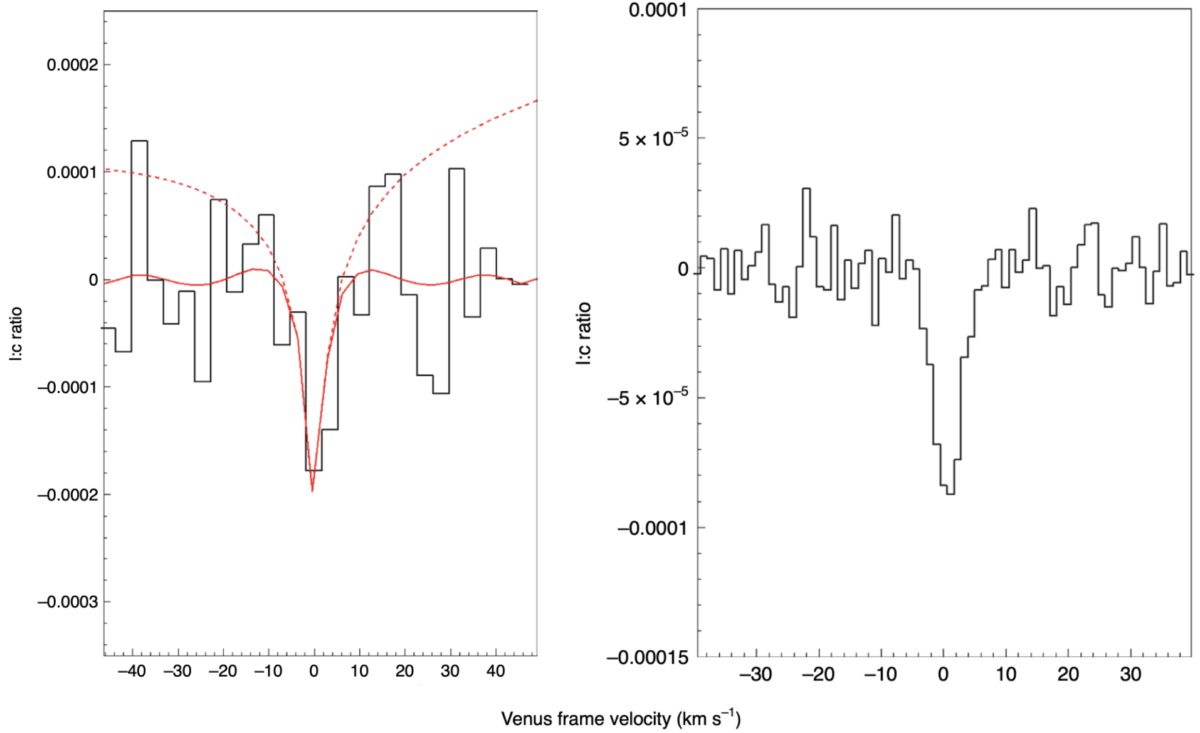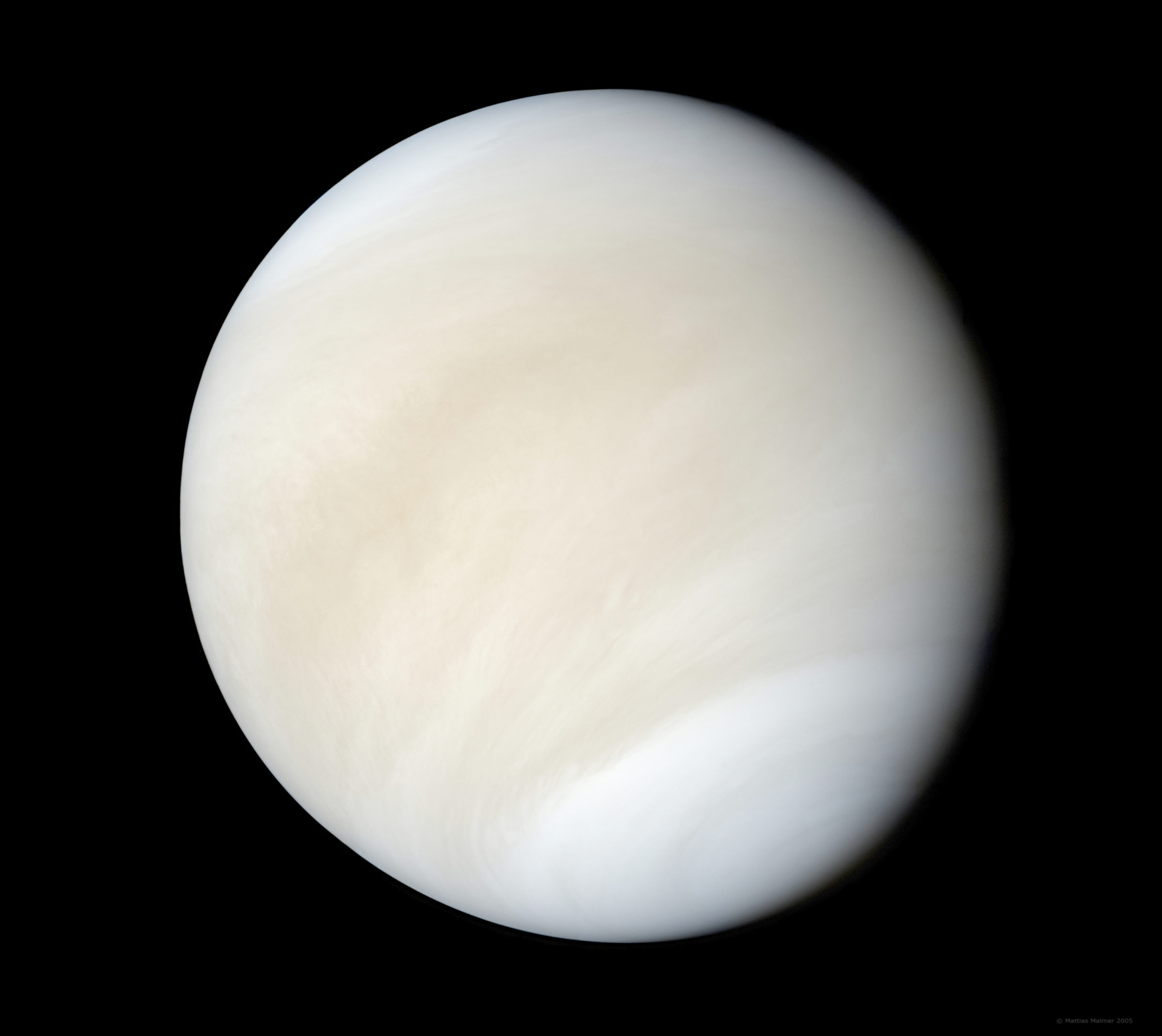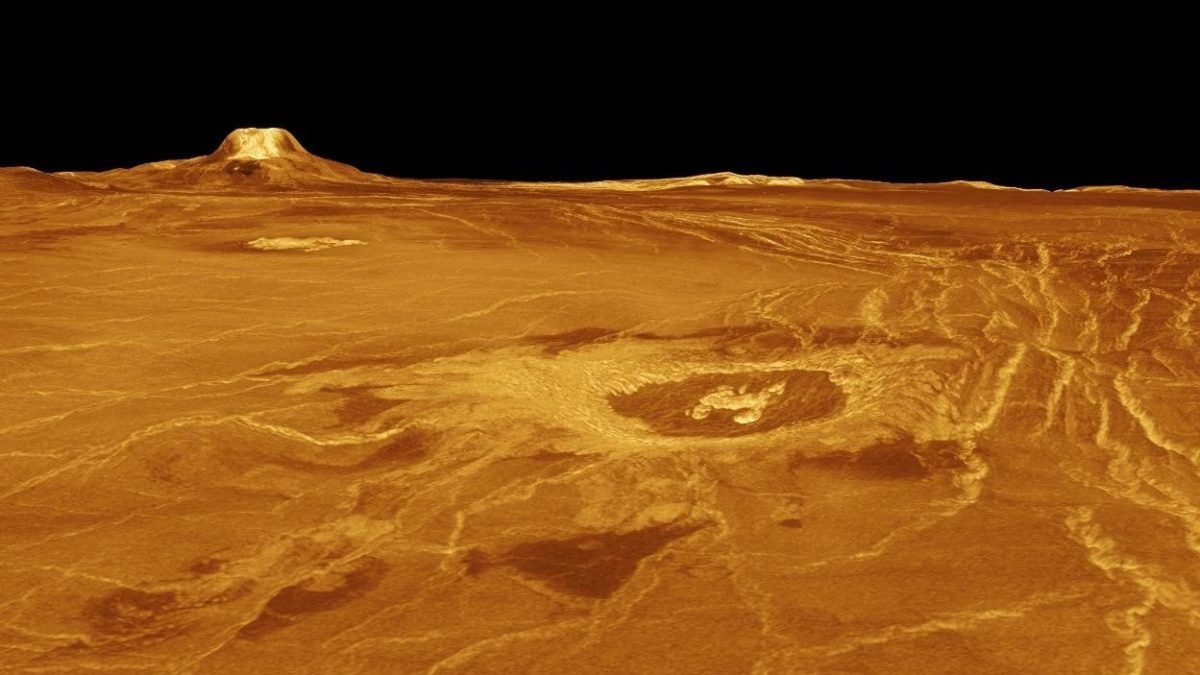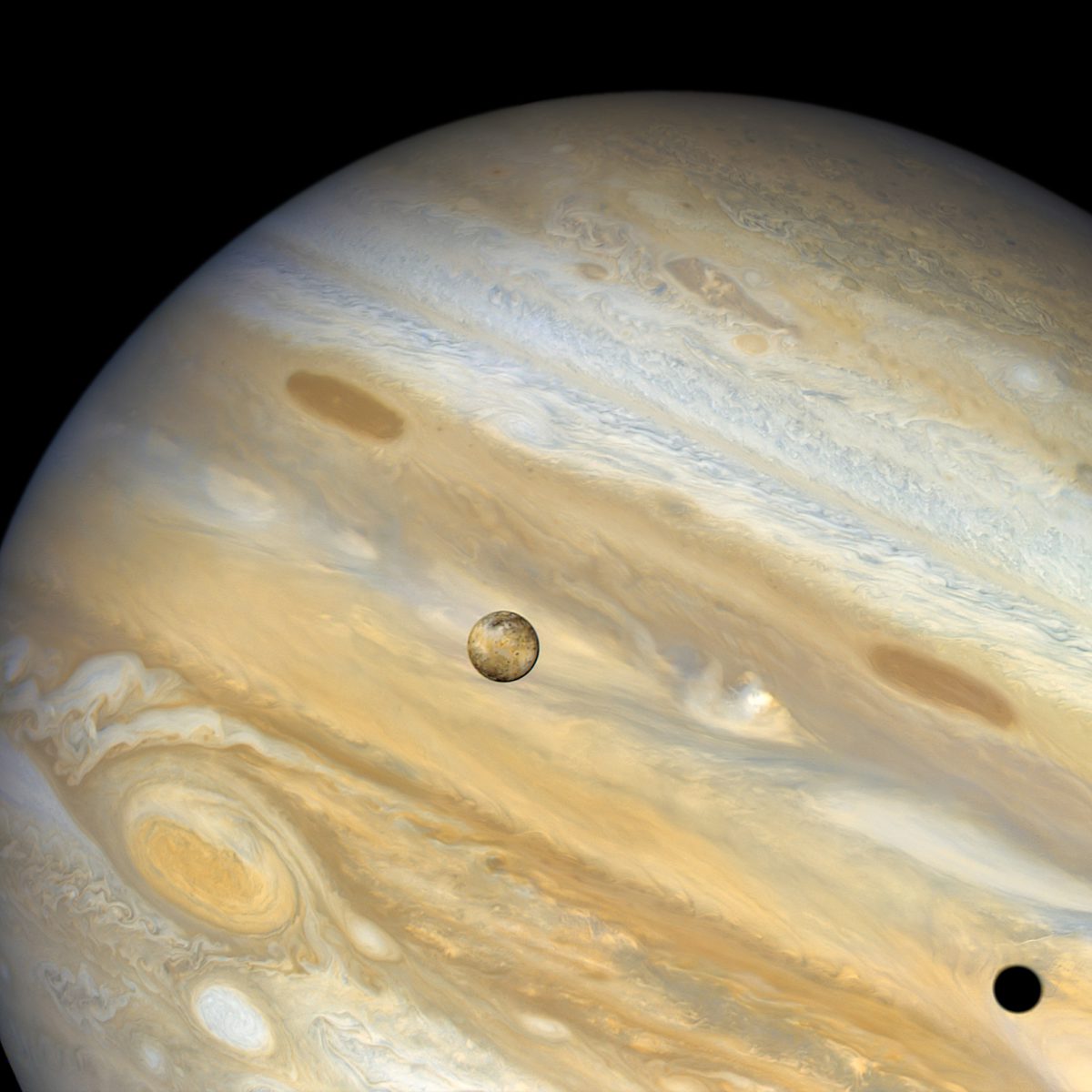Casey Dreier • Sep 14, 2020
Did Scientists Just Find Life on Venus? Here's How to Interpret the Phosphine Discovery
Biosignatures do not guarantee life, but they are a compelling argument for further exploration
In a paper released today in Nature Astronomy, astronomer Jane Greaves at Cardiff University and an international team of scientists announced the presence of phosphine in Venus’s atmosphere. Phosphine is considered a “biosignature”—a molecule strongly associated with the chemistry of life that has few non-life methods of production, particularly on a rocky planet like Venus. The team used two observatories—the James Clerk Maxwell Telescope (JCMT) in Hawaii and the Atacama Large Millimeter Array (ALMA) in Chile—to verify their detection.
The implications are massive: there could be life in Venus’ atmosphere. This may sound implausible, but there are regions of Venus’ upper atmosphere that are remarkably temperate and relatively hospitable. For decades there has been a hypothesis that, against the odds, microbial life forms could be floating around the planet. This detection is one piece of evidence in support of that hypothesis, but we are far from proving the existence of life.
Predictably, the news about this announcement has generated lots of breathless news coverage and claims about confirmed Venusian life on social media. These are inaccurate characterizations of the paper released today. What can we as non-scientists do to responsibly interpret this claim and not contribute to misinformation?
Let’s consider several pieces of context for evaluating the reliability—and implications—of this claim.
Explore Worlds
How The Planetary Society works to increase discoveries about the worlds of our Solar System and beyond.
We need independent confirmation
This is the first announcement of a difficult detection that required significant modeling and data analysis to tease the phosphine signal out of the noise. It’s possible the authors’ analysis contains an error or ignored important context that led to a false-positive result. Independent scientific teams must now do the work to confirm this signal.
This situation is not theoretical. In 2014, a group of highly respected cosmologists announced the detection of gravitational waves from the earliest moments of the Big Bang, making headlines across the world. Upon further study, it turned out to be misinterpreted signals from galactic dust. The team ultimately withdrew their claim.
I asked Wladimir Lyra, an astronomer at New Mexico State University who was not involved with this paper, his thoughts on the paper. “The analysis is very thorough; they definitely thought hard about the data,” he said. “They did go the extra mile to lend credence to this detection, but they could still be overfitting the spectrum in deriving the abundance of phosphine,” he said, referring to the process by which the scientific team analyzed their results.
Nienke van der Marel, an astronomer from the University of Victoria, Canada, and an expert on ALMA observations of circumstellar disks, agrees that the detection with 2 facilities makes it robust, especially the higher signal-to-noise detection with ALMA. "Even if ALMA had reduction issues that led to a false detection, it would still be a big coincidence to get a JCMT noise peak at that same frequency".

As Lyra mentioned, the authors of this paper went to great lengths to validate their detection before publishing their results. Not only did they use two separate observatories, but they observed Venus at two different times (the James Maxwell Observatory in 2017 and ALMA in 2019) and detecting it on both occasions. This reduces the likelihood of a false-positive due to observation-specific errors. The team also validated their analytical process by looking for a molecule known to exist in Venus’s atmosphere, and found it. They even looked at Jupiter’s moon Callisto for phosphine and didn’t see it, as expected.
Again, this doesn’t mean the signal is real. It means that the team did solid work to verify that their signal was real, and were confident in the results to publish it. To their credit, they also shared details of their analysis and computational scripts online for the world to scrutinize. There is nothing we can do but wait for the process of science to get to work, but there appears to be no significant reason to doubt this detection at this time.

Biosignatures do not equal life
Assuming the presence of phosphine is confirmed, the detection of a single biosignature does not mean life has been found on Venus.
Planets are complex systems that are not fully understood. Even Mars, which has been explored in greater detail than any other planet beyond Earth, has significant gaps in our understanding of its geologic history, chemistry, atmosphere, and climate. Recall that methane, a possible biosignature, was detected in Mars’s atmosphere in 2004. But follow-up observations by NASA’s Curiosity rover and the European Space Agency’s Trace Gas Orbiter yielded contradictory and inconclusive results.
Venus is far less understood than Mars. Though the planet was the recipient of the first interplanetary probe in 1962 and numerous Soviet missions in the 1970s and 1980s, only 2 missions have orbited in the last 25 years. The current scientific understanding of its surface chemistry, geologic processes, atmospheric behavior, and interaction with the interplanetary medium may lack critical pieces of information that would explain the presence of phosphines through natural processes, rather than life.
The Search for Life
How The Planetary Society works to elevate the search for life as a space exploration priority.
Yet the authors systematically look at all possible methods of natural phosphine creation on Venus, such as the production by lightning, delivery by meteorites, and photochemical reactions in the atmosphere, and find that they would all produce far less phosphine than observed.
Finally, there is an off chance that there is an unknown molecule in Venus’s atmosphere with a chemical signature very similar to that of phosphine; just close enough to mimic the phosphine signal at the scale of detection of the JCMT and ALMA observatories. The authors acknowledge this, and propose further observations that could help eliminate this possibility.
Ultimately, work must be done to verify these analyses and to better understand Venus itself. Right now, the best we can say is that the production of phosphine is strongly associated with life on rocky planets, and there is a candidate detection for phosphine in the atmosphere of Venus.
Listen to what the scientists say
The science team is quick to admit that they don’t know the answer to why they detected phosphine in Venus’s atmosphere. From their paper:
“If no known chemical process can explain [phosphine] within the upper atmosphere of Venus, then it must be produced by a process not previously considered plausible for Venusian conditions. This could be unknown photochemistry or geochemistry, or possibly life. Information is lacking...questions of why hypothetical organisms on Venus might make [phosphine] are also highly speculative.”
Life is just one possible explanation, and an explanation that raises its own set of difficult questions at that. This is perhaps the most critical input for how to calibrate our skepticism: how do the individuals presenting the data talk about their own discovery? Do they assert answers they cannot know, or do they present the data and acknowledge its limitations?
Reading this paper, the team appears to have made good faith efforts to verify their results, limit their own biases, and to acknowledge the range of possible answers to this detection. Their willingness to share their data and analyses openly is also a good indication of intent and desire to engage in the scientific debate that will surely commence.
Venus, Earth's twin sister
Venus hosts brutal conditions today, but the planet may have once been more hospitable to life.
Our uncertain future of biosignature detections
If nothing else, this announcement should remind us how little we know about the cosmos. There is so much yet to figure out—no planet is ever fully explored. Even the ones right next door.
This paper makes a strong case for the detection of phosphines in Venus’s atmosphere and that an unknown process is responsible for their generation—biological or otherwise. But this is the start, not the end, of the discovery process. It may end up leading to the confirmation of life many years into the future. It may (perhaps more likely) end up establishing a novel natural pathway for generating phosphine in Venus’s atmosphere. The self-correcting process of science works at the group level—not on that of the individual. We will have a better sense of this claim in the next few years by looking at the community consensus after more data are collected and more debate occurs.
For now, it’s ok to be excited by the possibility of the unknown. Hold your celebration on the likelihood of life, though, until we have the extraordinary evidence we’d need to verify that extraordinary claim. This is not it, though it’s a compelling reason to increase our exploration of Venus.

One more point.
I venture that, in the not-too-distant future, astronomers will make more detections of biosignatures in our solar system and in solar systems beyond. As the next generation of ground- and space-based telescopes come online, their immense sensitivity, combined with the ever-growing number of confirmed exoplanets, will likely unleash many exciting hints of life.
But consider: Venus is our celestial neighbor, accessible by robotic spacecraft and easily observed by telescopes. We largely know what it’s made of, what its surface looks like, and how its atmosphere behaves. Yet so much remains unexplained in light of this extraordinary new finding. At least a decade will pass before any dedicated robotic mission will arrive at Venus that could help address this question. But at least a robotic mission is a possibility.
The detection of a biosignature in the atmosphere of a distant exoplanet may forever remain ambiguous. It may be hundreds, if not thousands of light-years away; far too distant for direct exploration in our lifetime or for many human lifetimes to come. How little will we know about its surface, geology, and climate? How could we possibly discern or constrain the possible types of natural processes that could result in a false signal? Or, conversely, how could we assuredly confirm a biological origin knowing next to nothing about the context from which it arose?
We may find clever solutions to these problems in time. But it’s very likely they will lag behind the discoveries themselves. In that interim, we will find ourselves in a state of excited uncertainty—the very state we find ourselves in right now, with Venus. In the midst of ambiguity, easy answers are seductive, even soothing. But they are likely wrong, or at least incomplete. We must learn to embrace the uncertainty and to resist our desires for a binary answer—life or no life?—while the process of science does its work.
Support our core enterprises
Your support powers our mission to explore worlds, find life, and defend Earth. You make all the difference when you make a gift. Give today!
Donate

 Explore Worlds
Explore Worlds Find Life
Find Life Defend Earth
Defend Earth




